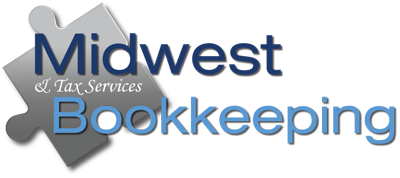What Are Medical Expenses?
Medical expenses are the costs of diagnosis, cure, mitigation, treatment, or prevention of disease, and the costs for treatments affecting any part or function of the body. These expenses include payments for legal medical services rendered by physicians, surgeons, dentists, and other medical practitioners. They include the costs of equipment, supplies, and diagnostic devices needed for these purposes.
Medical care expenses must be primarily to alleviate or prevent a physical or mental defect or illness. They do not include expenses that are merely beneficial to general health, such as vitamins or a vacation.
Medical expenses include the premiums you pay for insurance that covers the expenses of medical care, and the amounts you pay for transportation to get medical care. Medical expenses also include amounts paid for qualified long-term care services and limited amounts paid for any qualified long-term care insurance contract.
What Expenses Can You Include This Year?
You can include only the medical and dental expenses you paid this year, regardless of when the services were provided. If you pay medical expenses by check, the day you mail or deliver the check generally is the date of payment. If you use a “pay-by-phone” or “online” account to pay your medical expenses, the date reported on the statement of the financial institution showing when payment was made is the date of payment. If you use a credit card, include medical expenses you charge to your credit card in the year the charge is made, not when you actually pay the amount charged. If you did not claim a medical or dental expense that would have been deductible in an earlier year, you can file Form 1040X, Amended U.S. Individual Income Tax Return, for the year in which you overlooked the expense. Do not claim the expense on this year’s return. Generally, an amended return must be filed within 3 years from the date the original return was filed or within 2 years from the time the tax was paid, whichever is later.
You cannot include medical expenses that were paid by insurance companies or other sources. This is true whether the payments were made directly to you, to the patient, or to the provider of the medical services.
How Much of the Expenses Can You Deduct?
You can deduct on Schedule A (Form 1040) only the amount of your medical and dental expenses that is more than 7.5% of your AGI (Form 1040, line 38).
In this publication, the term “7.5% limit” is used to refer to 7.5% of your AGI. The phrase “subject to the 7.5% limit” is also used. This phrase means that you must subtract 7.5% (.075) of your AGI from your medical expenses to figure your medical expense deduction. Example. Your AGI is $40,000, 7.5% of which is $3,000. You paid medical expenses of $2,500. You can-not deduct any of your medical expenses because they are not more than 7.5% of your AGI.
What Medical Expenses Are Includible?
Ambulance- You can include in medical expenses amounts you pay for ambulance service.
Eye Exam- You can include in medical expenses the amount you pay for eye examinations.
Eyeglasses- You can include in medical expenses amounts you pay for eyeglasses and contact lenses needed for medical reasons. See Contact Lenses, earlier, for more information.
Eye Surgery- You can include in medical expenses the amount you pay for eye surgery to treat defective vision, such as laser eye surgery or radial keratotomy.
Contact Lenses- You can include in medical expenses amounts you pay for contact lenses needed for medical reasons. You can also include the cost of equipment and materials required for using contact lenses, such as saline solution and enzyme cleaner. See Eyeglasses and Eye Surgery, later.
Dental Treatment- You can include in medical expenses the amounts you pay for the prevention and alleviation of dental disease. Preventive treatment includes the services of a dental hygienist or dentist for such procedures as teeth cleaning, the application of sealants, and fluoride treatments to prevent tooth decay. Treatment to alleviate dental disease include services of a dentist for procedures such as X-rays, fillings, braces, extractions, dentures, and other dental ailments.
Hearing Aids- You can include in medical expenses the cost of a hearing aid and batteries, repairs, and maintenance needed to operate it.
Hospital Services- You can include in medical expenses amounts you pay for the cost of inpatient care at a hospital or similar institution if a principal reason for being there is to receive medical care. This includes amounts paid for meals and lodging. Also see Lodging, later.
Insurance Premiums- You can include in medical expenses insurance premiums you pay for policies that cover medical care. Medical care policies can provide payment for treatment that includes:
• Hospitalization, surgical services, X-rays,
• Prescription drugs and insulin,
• Dental care,
• Replacement of lost or damaged contact lenses, and
• Long-term care (subject to additional limitations).
Medicines- You can include in medical expenses amounts you pay for prescribed medicines and drugs. A prescribed drug is one that requires a prescription by a doctor for its use by an individual. You can also include amounts you pay for insulin. Except for insulin, you cannot include in medical expenses amounts you pay for a drug that is not prescribed.
Wheelchair- You can include in medical expenses amounts you pay for a wheelchair used mainly for the relief of sickness or disability, and not just to provide transportation to and from work. The cost of operating and maintaining the wheelchair is also a medical expense.
What Expenses Are Not Includible?
• Cosmetic Surgery
• Health Club Dues
• Funeral Expenses
• Weight-Loss Program
• Nonprescription Drugs and Medicines
• Nutritional Supplements
For more information please review Publication 502 at irs.gov
